Release date: 2016-12-12
In the late November, Lilly officially announced that the phase III clinical trial of the Alzheimer's disease drug, the beta amyloid antibody Solanezumab, which invested hundreds of millions of dollars in research funding, did not achieve the expected results. Eli Lilly's share price fell nearly 20%. The circle of friends was immediately occupied by "We are all Lilly".
Despite this, Wall Street is still full of information about Biogen's drug aducanumab. The top journal Nature has also written that "failed Alzheimer's disease drugs can't beat the beta amyloid theory" (1). After all, 3 months ago, Nature introduced Biogen's aducanumab in the form of a cover, because Biogen's early research showed that aducanumab can effectively reduce beta amyloid plaques in the brain of patients with mild Alzheimer's disease. Block (2). It is also a drug that costs hundreds of millions of dollars.
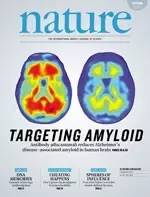
Although the drugs for treating Alzheimer's disease fall one after another, the huge market demand is still stimulating the drug companies to develop new drugs. Now the scientific community does not put eggs in a basket of beta amyloid, but also began to explore Tau protein inhibitors, BACE1 protein inhibitors, gene therapy, anti-cancer drugs bexarotene and other therapies.
However, at present, these methods have not jumped out of the box of using drugs to treat Alzheimer's disease.
What? ! It can cure medicine without drugs, and it is a disease of Alzheimer's disease.
Yes, I didn’t dare to believe my eyes when I first saw this research. But when I looked at it, I trembled. I quickly told the Singularity editorial department, "There is a super-subversion study on Alzheimer's disease, which is simply a retrograde!" Obviously, in the face of this wonderful study, the singularity cake has been poor.
Don't sell off, say something. This morning, Nature published a research paper by Dr. Picower of MIT Neuroscience and Dr. Li-Huei Tsai, director of the Picower Institute. Dr. Tsai's team used special frequency LED lights to eliminate Alzheimer's disease in the mouse brain. "The source of all evil" beta amyloid (3). Dr. Tsai found that using their special LED lights, 40%-50% of amyloid beta protein in the hippocampus of mice can be eliminated within 1 hour. The longer the treatment time, the more amyloid beta is eliminated. Hannah F. iaccarino and Annabelle c. Singer are co-first authors of this article.

â–² Dr. Li-Huei Tsai
Do you dare to believe in your own eyes? It is an LED light. I didn't believe it because it was made in Nature, or by several MIT scientists at MIT. So what is going on here? This principle is quite complicated, I try to make it clear.
Probably no one has ever heard of an EEG. In fact, the signal transmission in our brain is transmitted in the form of electricity between the various neurons, and this transmission has a specific frequency. This frequency is very similar to the number of frames in a movie. There are 12 frames, 24 frames, 48 ​​frames, and 120 frames of Ang Lee. To put it bluntly, it is how many photos are switched every second. The nerve cells in our brains are also brushed at a fixed frequency. If they do not follow a fixed frequency, they should be in a state of insanity. If you change to a movie, it is the flower screen we often see.
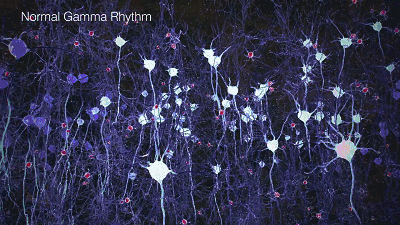
â–² Under normal circumstances, we have the signal transmission state of brain nerve cells when we have thought activities.
In general, when we enter a deep sleep state, the frequency of the signal between neurons is several times per second, and the brain is basically inactive; if we wake up and are in a normal state, each The second is about 10-30 times. This blinking frequency is called β wave. If it reaches 30-90 times per second, it is called γ wave. This state is related to high mental activity. If it is higher, it is estimated that the brain will be down.
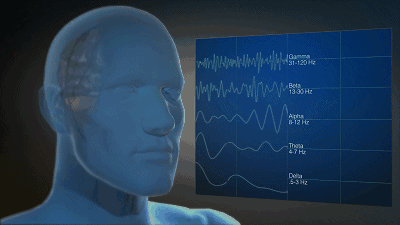
â–²The signal transmission frequency of the brain varies greatly under different conditions (the specific limits in each state are not clear)
Scientists have observed that in the brains of patients with brain damage, schizophrenia and Alzheimer's disease, their brain gamma waves are disturbed (4; 5). But is this the cause or the result of Alzheimer's disease? This is a problem.
 ▲ γ wave state of nerve in AD patients
▲ γ wave state of nerve in AD patients
"Many neurologists, including myself, have always believed that gamma waves transmit signals and information. We don't think it has the ability to change the physiological state of nerve cells," said Vikaas Sohal, a professor of neurology at the University of California who did not participate in the study. The Atlantic Monthly, "If you compare gamma waves to software running on your brain, it's a software that can change hardware."
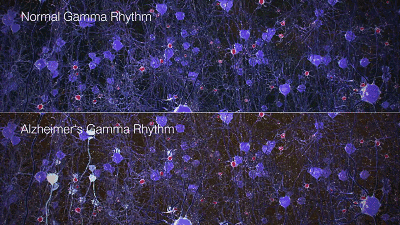
â–²The difference between the healthy person and AD brain gamma wave, the difference is indeed obvious
The original problem is here, scientists believe that the change of γ wave is a fruit, not a cause. Therefore, scientists have been searching for the causes and treatment of Alzheimer's disease at the genetic and molecular levels, ignoring the relationship between the connections between neurons and diseases. This gamma wave is exactly how the neurons are connected. Since it has changed in the minds of patients with Alzheimer's disease, it is necessary to see how this change affects the brain. This is the original intention of the research team of Dr. Tsai.
First, Dr. Tsai's team received mice with Alzheimer's disease due to genetic mutations. There was no accumulation of amyloid beta in the brains of these mice, and the mice did not show obvious symptoms. But Dr. Tsai found that the gamma waves were significantly lower than normal when these mice were learning and thinking.
Next, it is estimated that you can also think of ways to raise the gamma wave of the mouse to the normal range. At this time, in the early days of the experiment, Dr. Tsai did not think of using LED tubes. So I found Dr. Edward S. Boyden, a MIT optical genetics scientist, who implanted photoreceptors on the nerve cells of mice and implanted light sources in the brains of mice. Let the source flash at a frequency of 40 times per second. As a result, the scene at the beginning of the article appeared. After one hour of irradiation, the amyloid beta protein in the hippocampus of mice was reduced by 40%-50%. Of course, this 40 times per second was not found at once. They tried it from 20 to 80 times per second. They found that there were only 40 good ones, and the others didn't work.
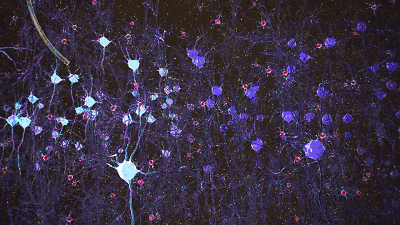
â–²The light source implanted in the brain flashes at a certain frequency, activates the nerve cells, and allows them to transmit signals at a specific frequency.
In fact, the results of the experiment to this point should have been very shocking. However, Dr. Tsai and colleague Emery Brown thought, is it possible to use non-invasive external light sources? These lights can also be transmitted to the depths of the brain through both eyes. So they only made LED lights with a flashing frequency of 40 times per second, using this to stimulate the mice. They were surprised to find that the gamma wave frequency of the mouse visual cortex really increased, and beta amyloid was also reduced by half. However, within 24 hours, the level of amyloid beta returned to its original level. This is really not a good phenomenon.
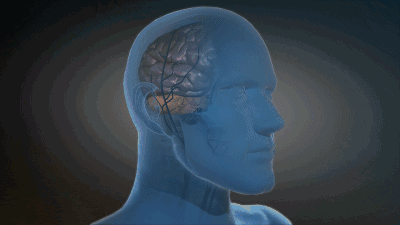
â–²External light source can activate brain nerve through eyes
Later, the Tsai team tried to stimulate the mice for one hour each time for 7 consecutive days. It was found that not only the β amyloid agglomerate in the visual cortex of the mouse was reduced, but also the free amyloid β protein was significantly reduced. It is unclear how long this state can last after stopping treatment.
In addition, the Tsai team also found that increasing the gamma wave frequency of the brain can also reduce the concentration of Tau protein in the brain. This Tau protein is a new marker that has gradually been recognized by the academic community in recent years. The drug for this protein is TauRx Therapeutics' LMTX, which is effective in early clinical studies. From the phase III clinical data released in July this year, it seems to be effective, but it needs to be analyzed later.

â–² mice are exposed to a specific frequency of LED light source for treatment
How does gamma wave make beta amyloid and Tau protein disappear? The Tsai team found that after irradiation with LED lamps, the rate of beta amyloid production was reduced, and some of the brain's ability to destroy amyloid-like cells increased. In this way, the two sides attacked and killed the amyloid beta protein in the brain.
Ok, here, the Tsai team's research is basically clear. At present, their team's graduate students are still stepping up their in-depth research. For example, can a specific frequency LED light activate the brains of other areas through both eyes? If it doesn't work, this research is also a day. But what is gratifying is that the preliminary research by the Tsai team shows that this can be done. Specifically how to do it, it is estimated that they will wait for their next research paper.
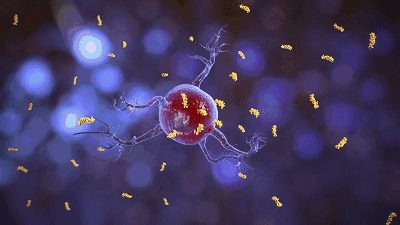
â–²In the case of external light source intervention, the ability of specific cells inside the brain to clean up amyloid beta
They are still busy researching whether the effects of LED lights on the behavioral patterns of mice after elimination of amyloid beta are really treatable or alleviate Alzheimer's disease. For this, Dr. Tsai should also be confident, because neurologist Jorge J. Palop of the Gladstone Institute in California in 2012 found that restoring gamma waves in mice with Alzheimer's disease can improve memory in mice. (5). They also need to study whether the method of increasing the gamma-wave frequency of such LED lamps can also be used to treat other mental illnesses.
Overall, if the "beta amyloid" that the academic community has been insisting on is correct, the Tsai team's research is likely to revolutionize the treatment of Alzheimer's disease.
Of course, this experiment is currently done in mice, although it has brought us very pleasant results, but we also have to realize that many of the animals in this field are spiritual, and it is not good to let people go.
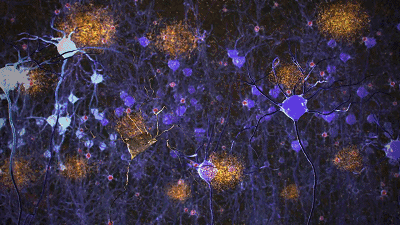
â–² After restoring a specific rhythm, beta amyloid begins to disappear
"This is a big "if"," Dr. Tsai said in an interview with MIT reporters. "But if this method works as well in the human body, I dare say that the potential of this method is enormous because it is non-invasive. It is so convenient."
In fact, the benefits of this approach are not only non-invasive. It does not require medication, and no serious side effects are certain. More importantly, how convenient it is to do clinical research. It is not necessary to produce medicines. It is good to have a light for each patient (don't take it seriously), which can save a lot of money.
With such a good method, can you go to the clinic when you are? Just after the publication of this research paper by Nature today, Cognito Therapeutics announced that Cognito has obtained the exclusive worldwide license from Dr. Tsai and Dr. Boyden for this invention from MIT. Dr. Tsai and Boyden are also the founders of the company. Subsequent clinical research should be undertaken by Cognito.
 â–²Cognito Therapeutics Homepage
â–²Cognito Therapeutics Homepage
Of course, before this device is clinically validated, we should not try it ourselves. It seems that there is no impact on opening a light, but the situation may not be as simple as we think. Let us wish Dr. Tsai and Dr. Boyden to bless Cognito Therapeutics, hoping that they will confirm it as soon as possible and turn the technology into a product. After we are old, we can have this lamp on the bedside.
Reference materials:
[1] Dolgin AAE. 2016. Failed Alzheimer's trial does not kill leading theory of disease. Nature 540
[2] Sevigny J, Chiao P, Bussière T, Weinreb PH, Williams L, et al. 2016. The antibody aducanumab reduces Aβ plaques in Alzheimer's disease. Nature 537:50-6
[3] Iaccarino HF, Singer AC, Martorell AJ, Rudenko A, Gao F, et al. 2016. Gamma frequency entrainment attenuates amyloid load and modifies microglia. Nature 540:230-5
[4] Palop JJ, Chin J, Roberson ED, Wang J, Thwin MT, et al. 2016. Aberrant Excitatory Neuronal Activity and Compensatory Remodeling of Inhibitory Hippocampal Circuits in Mouse Models of Alzheimer's Disease. Neuron 55:697-711
[5] Verret L, Mann Edward O, Hang Giao B, Barth Albert MI, Cobos I, et al. 2016. Inhibitory Interneuron Deficit Links Altered Network Activity and Cognitive Dysfunction in Alzheimer Model. Cell 149:708-21
[6]http://news.mit.edu/2016/visual-stimulation-treatment-alzheimer-1207
Source: Health Point
Fruit Juice Powder,Mulberry Juice Powder,Orange Juice Powder,Blueberry Fruit Powder
Xi'an XJeson Biotech Co., Ltd , https://www.xjesonbio.com